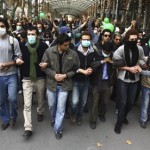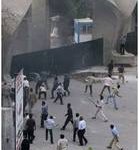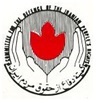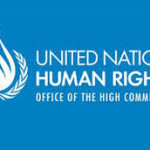
Iranian authorities have failed to provide accountability for at least 72 deaths in custody since January 2010, despite credible reports that they resulted from torture or other ill-treatment or the lethal use of firearms and tear gas by officials, said Amnesty International following yesterday’s reports of yet another suspicious death in custody.
The findings, which are based on Amnesty International’s long-term research and a comprehensive review of reporting by credible human rights groups and media outlets, reveal that since January 2010, at least 72 deaths occurred at 42 prisons and detention centres in 16 provinces across the country. The latest documented case concerns Yaser Mangouri, aged 31, whose death was reported to his family by ministry of intelligence officials in Urumieh, West Azerbaijan province on 8 September 2021. Not a single official has since been held to account for these deaths, reflecting Iran’s long-standing crisis of impunity where allegations of torture and unlawful killings consistently go uninvestigated and unpunished. Only a few weeks ago, leaked video footage from the infamous Evin prison offered disturbing evidence of beatings, sexual harassment, and other ill-treatment of prisoners by prison officials.

“Yesterday’s reports of the death of Yaser Mangouri in suspicious circumstances further exposes how the prevailing climate of impunity further emboldens security forces to violate prisoners’ right to life without any fear of consequence or accountability. The authorities’ systemic refusal to conduct any independent investigations into these deaths in custody is a grim reflection of the normalisation of the arbitrary deprivation of life by state authorities,” said Heba Morayef, Middle East and North Africa Regional Director at Amnesty International.
“Ensuring respect for people’s right to life requires that officials suspected of torturing prisoners to death are criminally investigated, and if enough admissible evidence against them is found, prosecuted. Lack of investigations constitutes in and of itself a violation of the right to life.”
In 46 of the deaths in custody cases, informed sources including the relatives and/or fellow inmates of the deceased reported that the death resulted from physical torture or other ill-treatment at the hands of intelligence and security agents or prison officials. A further 15 followed the lethal use of firearms and/or tear gas by prison security guards to suppress prison protests over Covid-19 safety fears, according to credible sources. In the remaining 11 cases, the deaths occurred in suspicious circumstances, but no further details about potential causes were available. The majority of deaths recorded took place since 2015.
Amnesty International has issued a list of the names of those who have died in custody along with their reported age and the date and location of death. The list excludes dozens of cases of deaths in custody with suspected links to the denial of medical care, which the organization is in the process of investigating.
In 31 cases, Amnesty International documented the deaths in custody, including by speaking directly to primary sources impacted by the deaths, such as relatives, fellow inmates and acquaintances. In 41 other cases, it recorded the deaths based on the reporting of credible media outlets and trusted human rights groups working with informed sources on the ground.
Amnesty International believes that the real number of deaths in custody is likely much higher given the lack of transparency in Iran’s justice system and the fact that many human rights violations go unreported due to widespread fear of reprisal and systematic repression of civil society.
Deaths early on in custody
Of the 46 deaths in custody involving reports of physical torture or other ill-treatment, at least 36 took place during the preliminary investigation stage. The majority (28) died in custody within a few days of their arrest and detention. One died immediately after arrest and before even being transferred to a detention centre.
According to information compiled by Amnesty International, at least nine people died in facilities run by the investigation unit of Iran’s police (Agahi), 11 in facilities run by the ministry of intelligence, two in facilities run by regular city police, two in facilities run by border or immigration guards, and one person each in facilities run by Iran’s Cyber Police (FATA) and the Revolutionary Guards, respectively.
For 36 of the 46 alleged victims, information about their exact or approximate age was available. According to this information, 16 were in their twenties, 12 in their thirties, and three between 18 and 20 years of age, which means, based on known age, younger people constitute 86% of the deceased.
State denials and cover up
Iranian authorities typically blame deaths in custody on suicide, drug overdose or illness in a rushed manner and without conducting any independent and transparent investigations.
Amnesty International has found that in at least 24 of the 46 cases of deaths in custody involving reports of physical torture or other ill-treatment, the authorities announced shortly thereafter that the deaths were the result of suicide (7), strokes, heart attacks or other illnesses (12), drug overdose (3) or exchange of fire during arrest (2). Similarly, in three of the 11 deaths reported as suspicious, the authorities claimed that suicide (1), drug use (1) or illness (1) were the cause of death.
Years of documentation and monitoring by Amnesty International shows that family members of people who die in custody in suspicious circumstances are routinely subjected to various forms of harassment and intimidation by intelligence and security officers, particularly when publicly disputing the authorities’ claims about the circumstances surrounding the deaths of their loved ones or seeking legal redress. Lawyers have also received threats for pursuing legal action or even faced persecution and imprisonment. Iranian authorities also have a documented track-record of pressuring families to bury their loved ones immediately and without an independent autopsy.
Amnesty International shares the serious concerns of the UN Special Rapporteur on Iran regarding “the absence of domestic remedies … for gross human rights violations in the Islamic Republic of Iran” and echoes the latest call in his July 2021 report on the international community to fulfil its “important role in ensuring accountability.”
Amnesty International together with nine other human rights organizations have urged member states of the UN Human Rights Council to establish an investigative and accountability mechanism to collect, preserve and analyse evidence of the most serious crimes under international law committed in Iran to facilitate fair criminal proceedings.
Background
Yaser Mangouri was arrested and forcibly disappeared by ministry of intelligence officials in Urumieh, West Azerbaijan province on 17 July 2021, according to the human rights group Hengaw. On 8 September 2021, the ministry of intelligence in Urumieh informed his family that he had died due to exchange of fire during arrest. His family rejects this explanation and maintains that he was arrested shortly after leaving his house while unarmed. As of 14 September 2021, when the news of his death in custody was publicized, the authorities had refused to return his body to his family.
Amnesty International has previously documented how Iranian security and intelligence officials routinely subject men, women and children behind bars to torture or other ill-treatment, including floggings, suspension, electric shocks, mock executions, force-feeding of chemical substances, and deliberate deprivation of medical care.
ENDS












 Posted in
Posted in 











